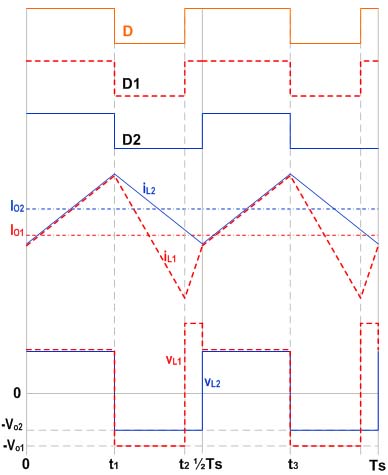LIBRARY
Multi-Channel Constant Current (MC3) LED Driver

Current solutions for the multi-channel constant current LED driver usually contain three stages: PFC stage, front-end DC/DC stage, and multi-channel constant current source stage. In this 3-stage solution, each stage needs one or more controllers, especially, in the third stage, each LED string needs a separate controller to control the output current. As a result, this structure is complicated and expensive.
In order to achieve high efficiency and simple control strategy for the MC3 LED driver, a novel 2-stage multi-channel constant current driver is proposed. The structure of the proposed 2-stage MC3 LED driver is shown in Fig. 1. In the proposed 2-stage MC3 LED driver, the first stage is still the traditional PFC circuit, while the front-end DC/DC stage and the multi-channel constant current source stage are combined together to form a single-stage, multi-channel constant current source. Compared with the 3-stage approach, this 2-stage approach reduces the component number so as to reduce the driver's total cost. The schematic and waveforms are shown in Fig. 2 and Fig. 3.
To further improve the current cross regulation, coupled inductor concept is employed in the proposed MC3 LED driver. The output inductors of each channel coupled with each other, and the inductor's current of each channel is forced to follow with other channel because of the coupling effect. Therefore, the current cross regulation can be further improved compared with no-coupling situation. The simulation results show this driver structure has very good output current cross regulation and system robustness.
























































































